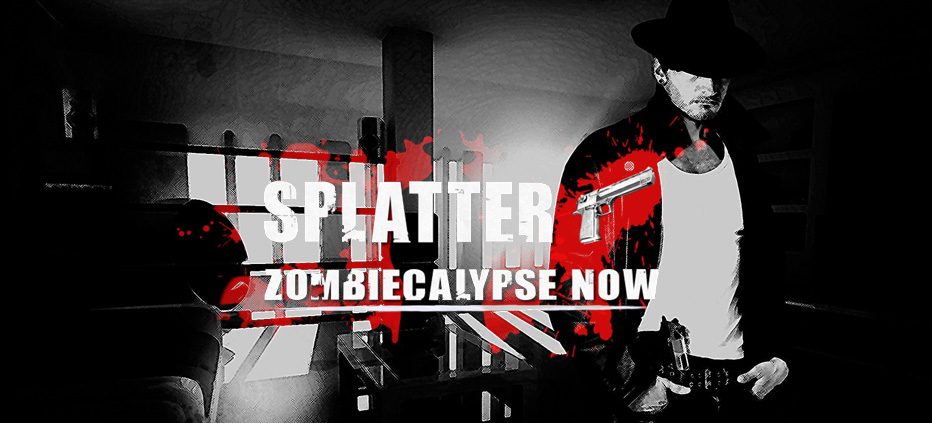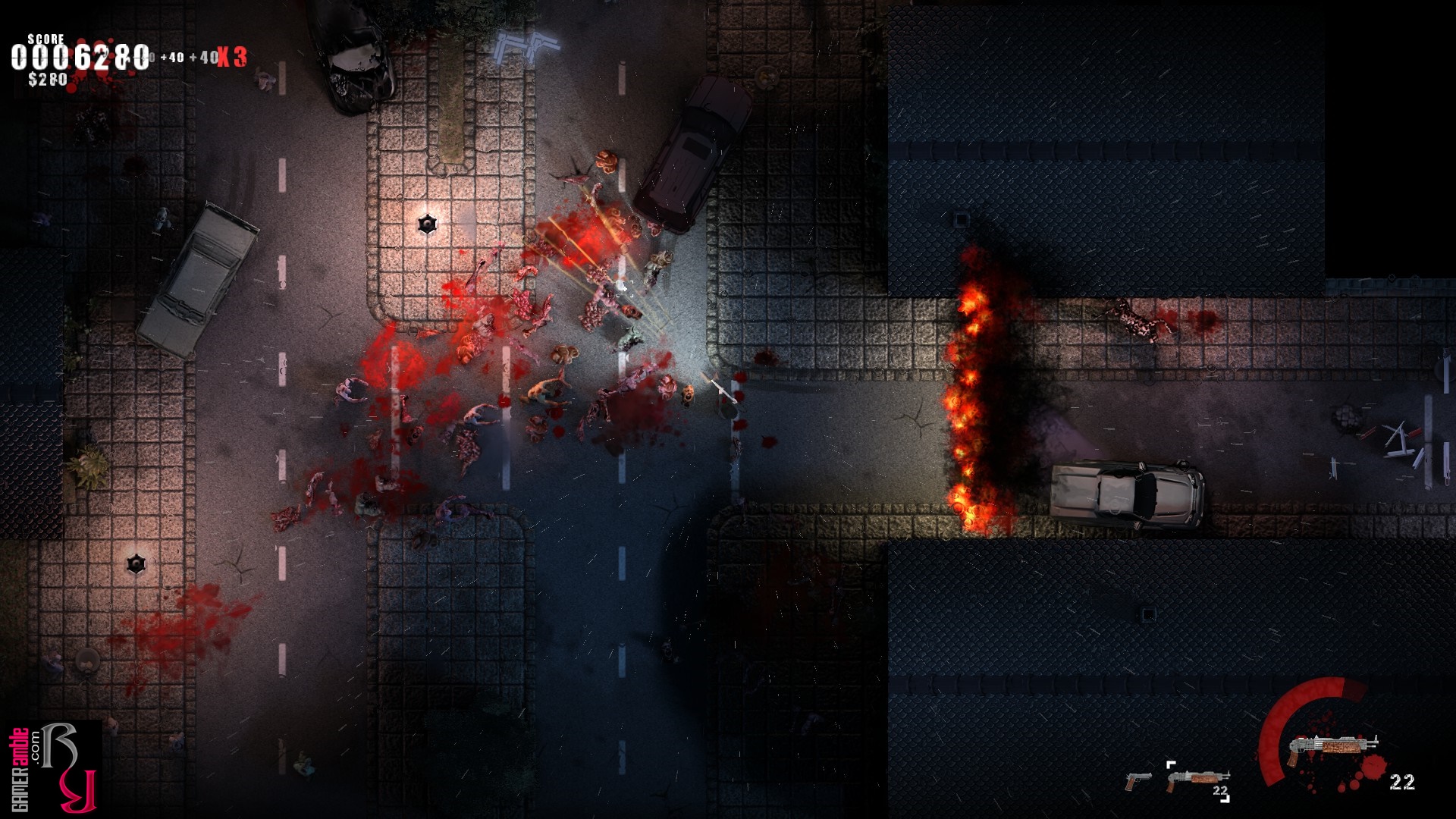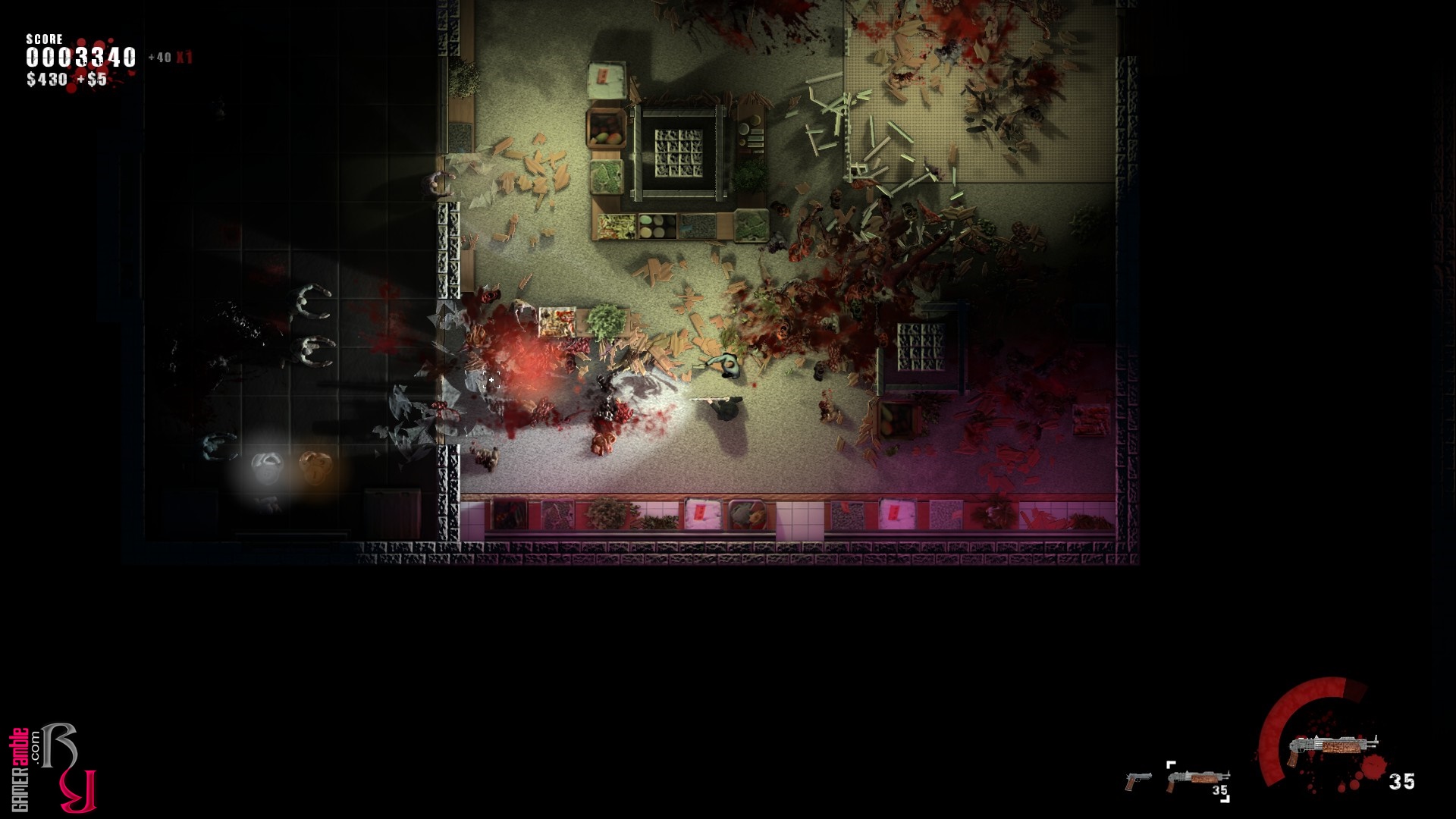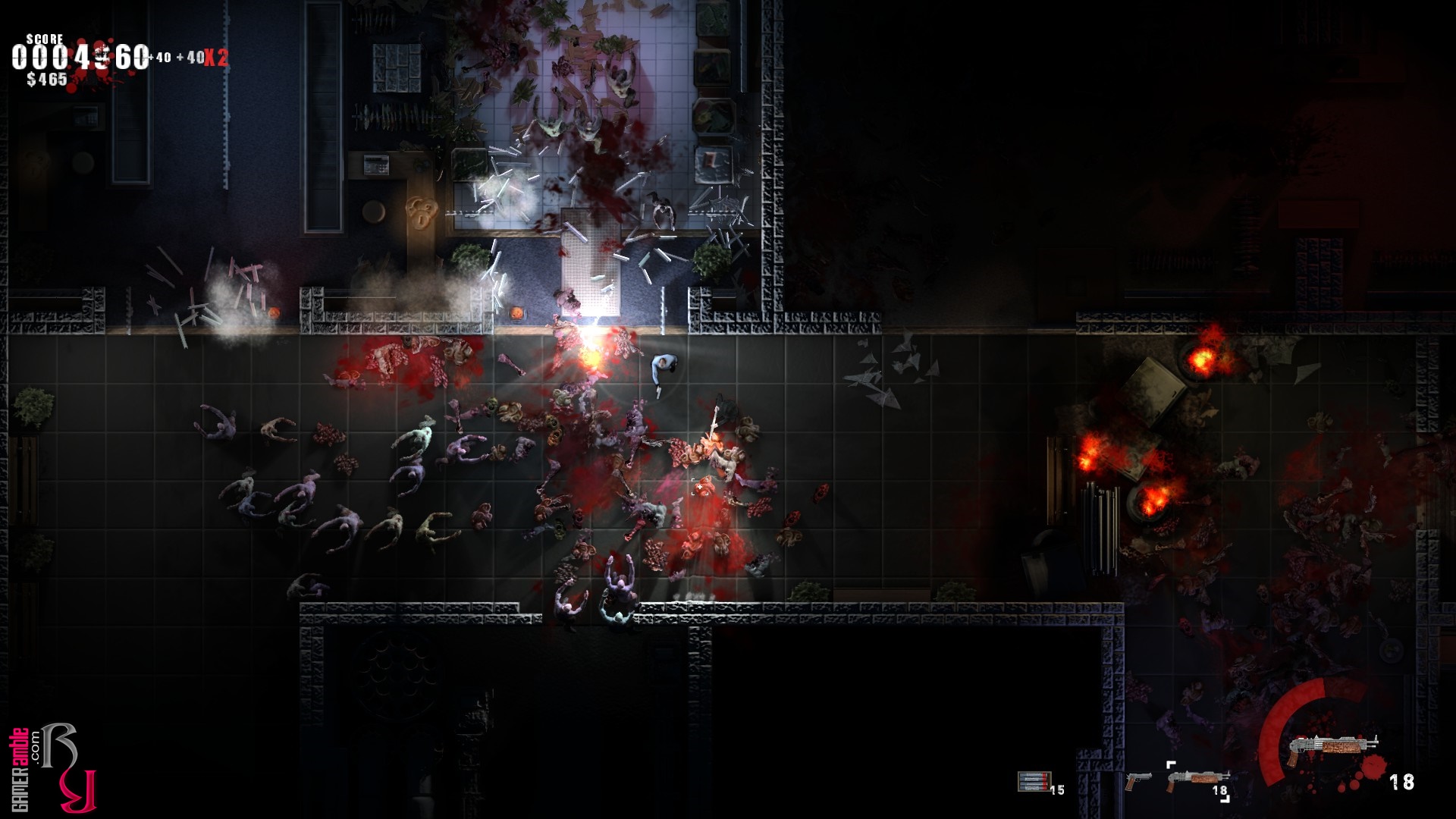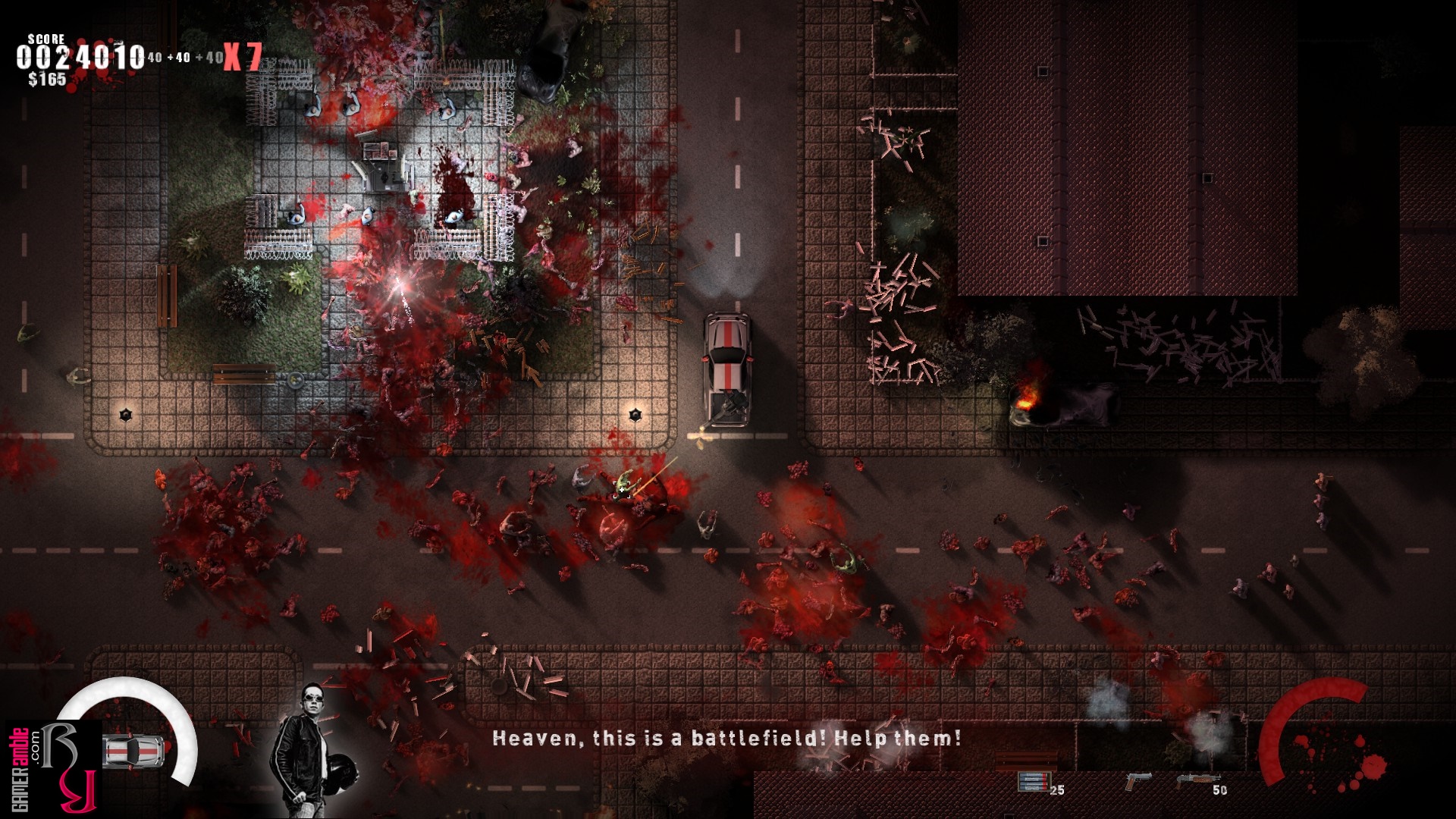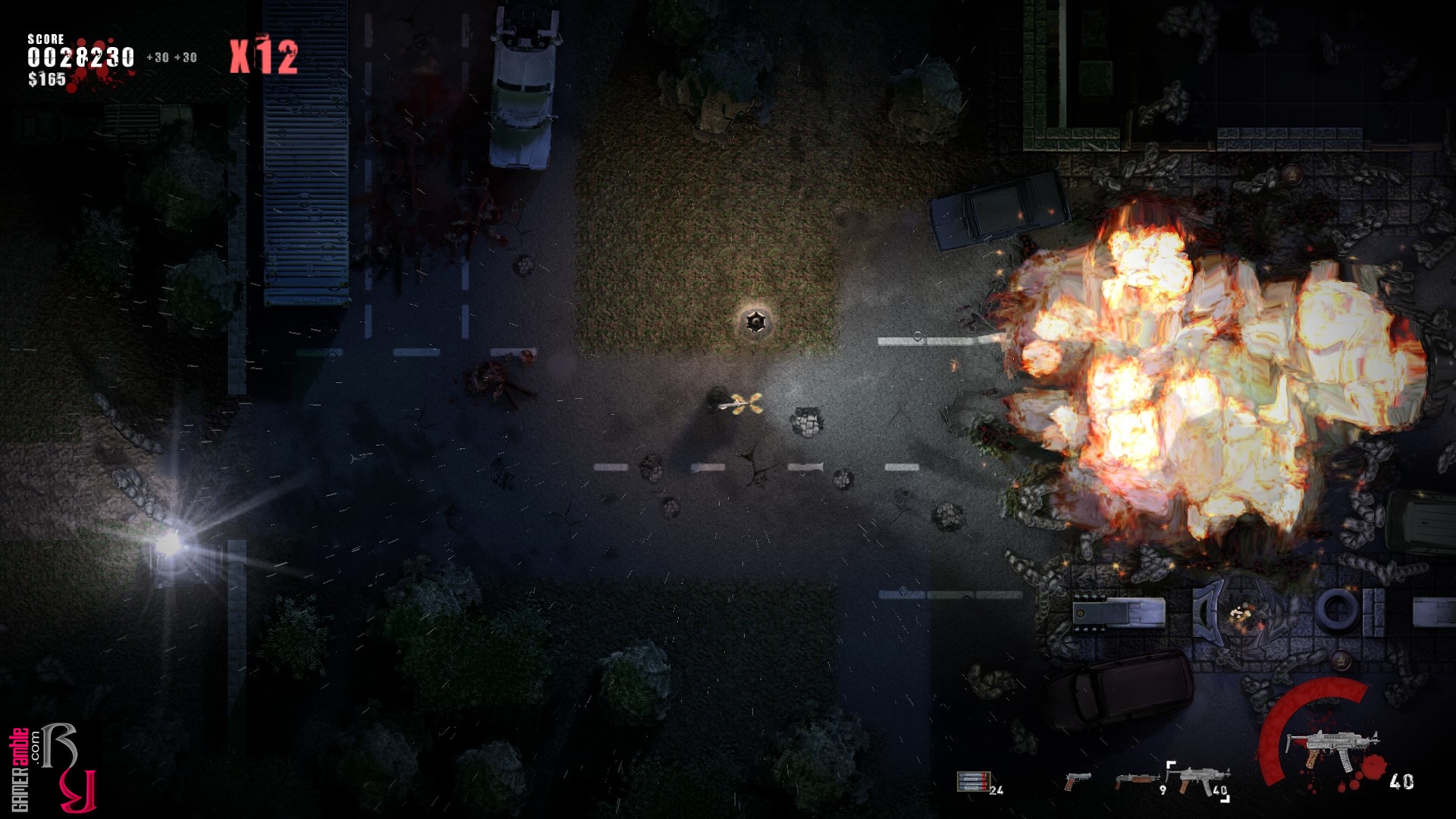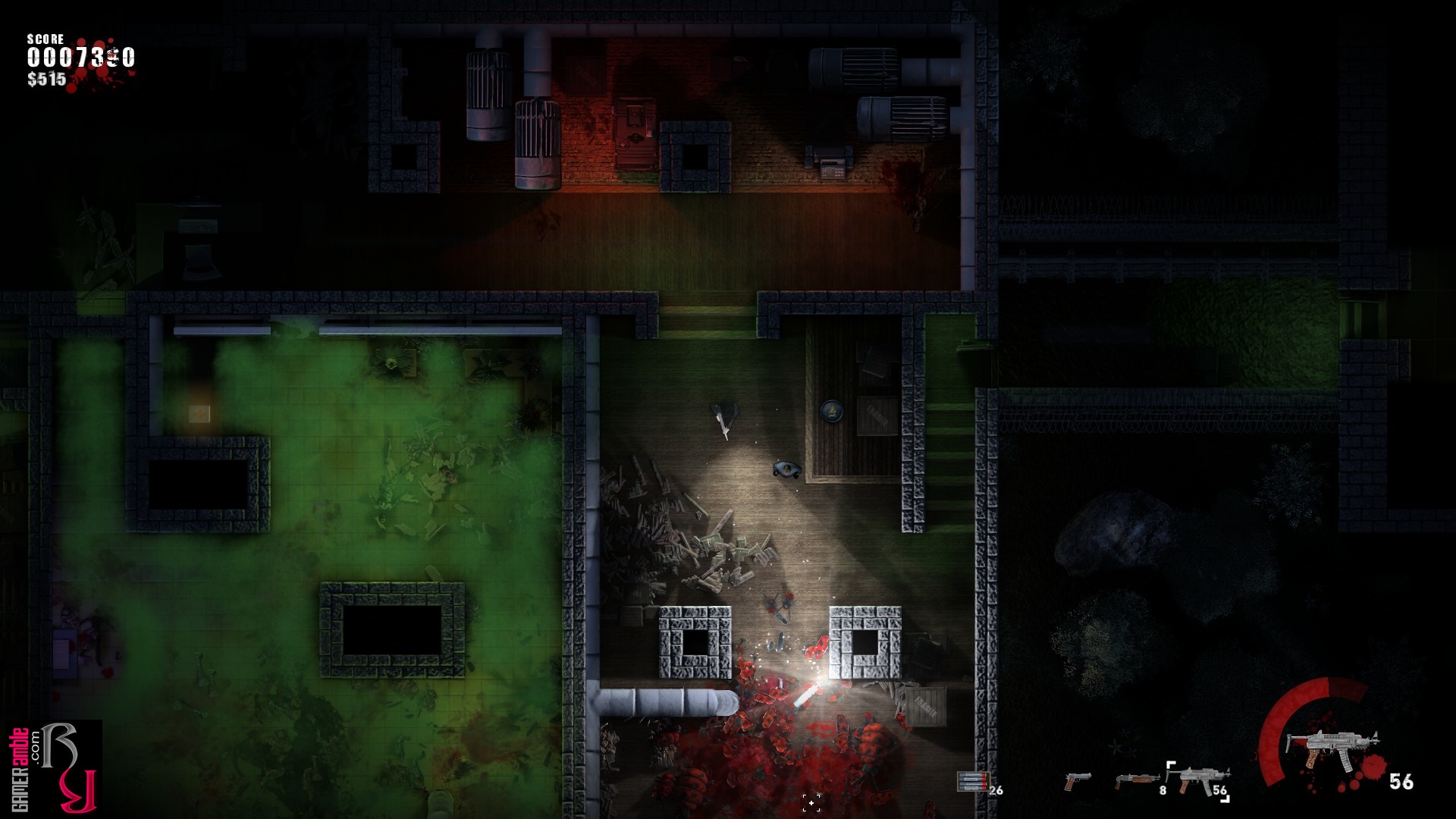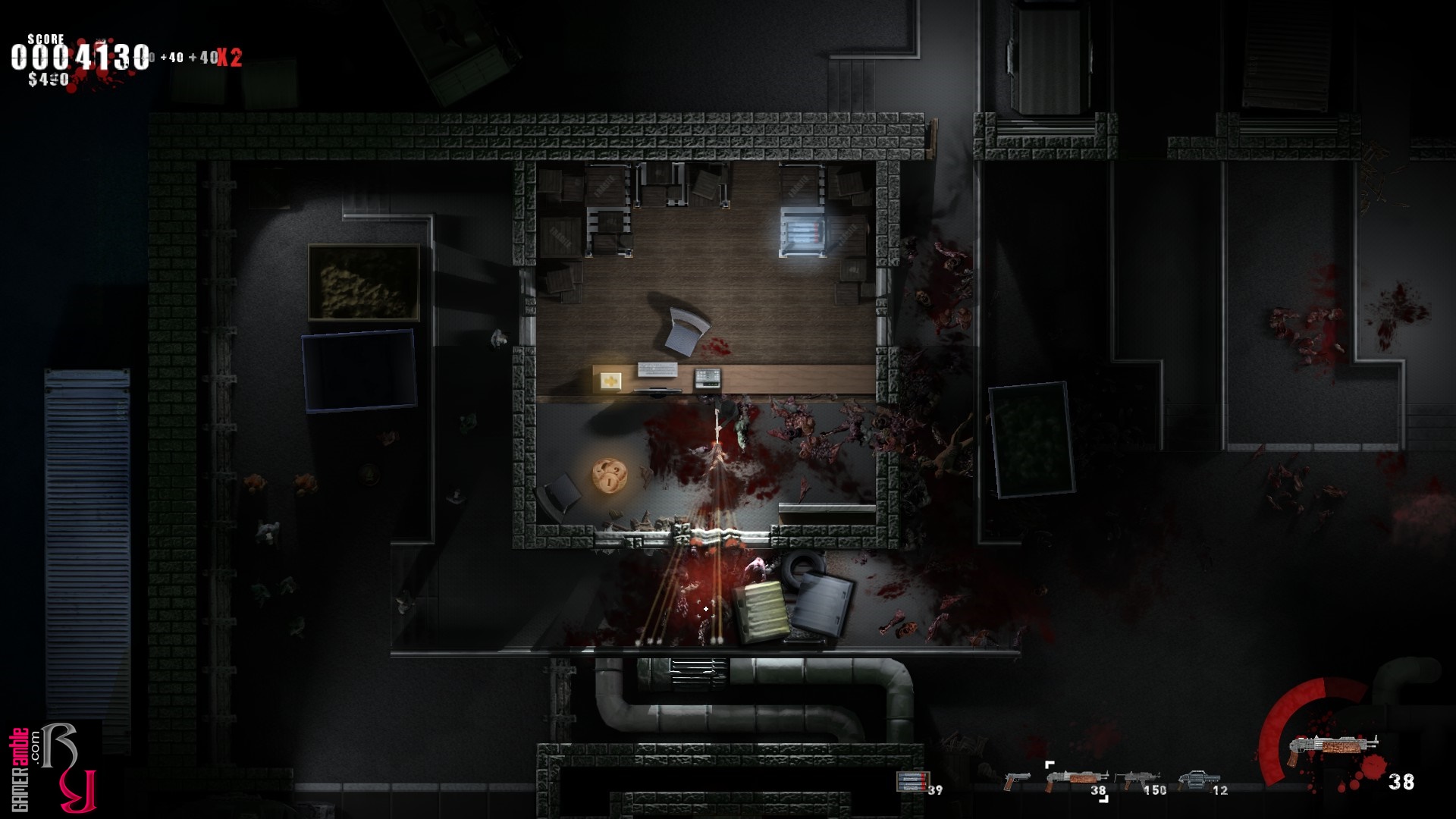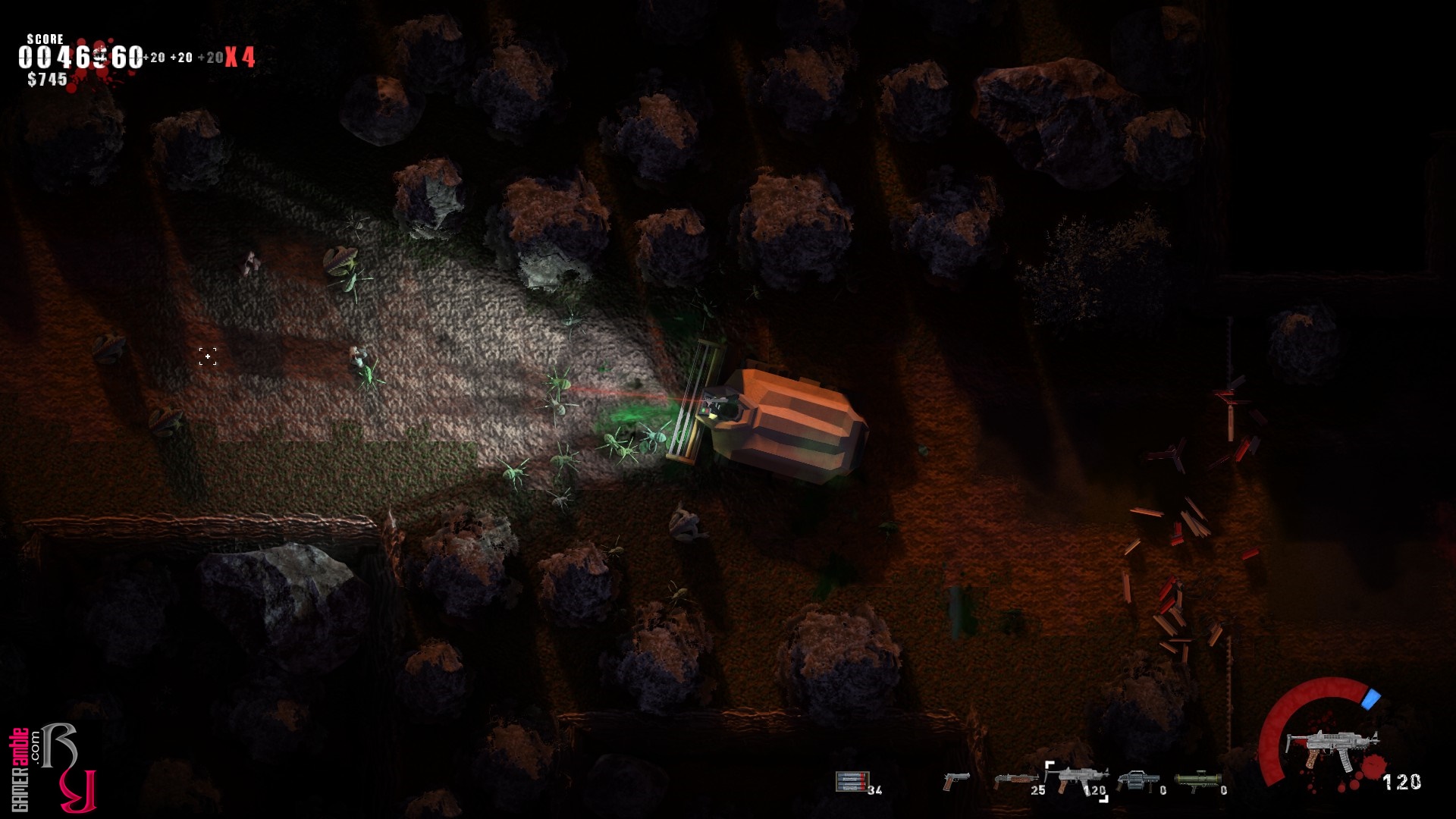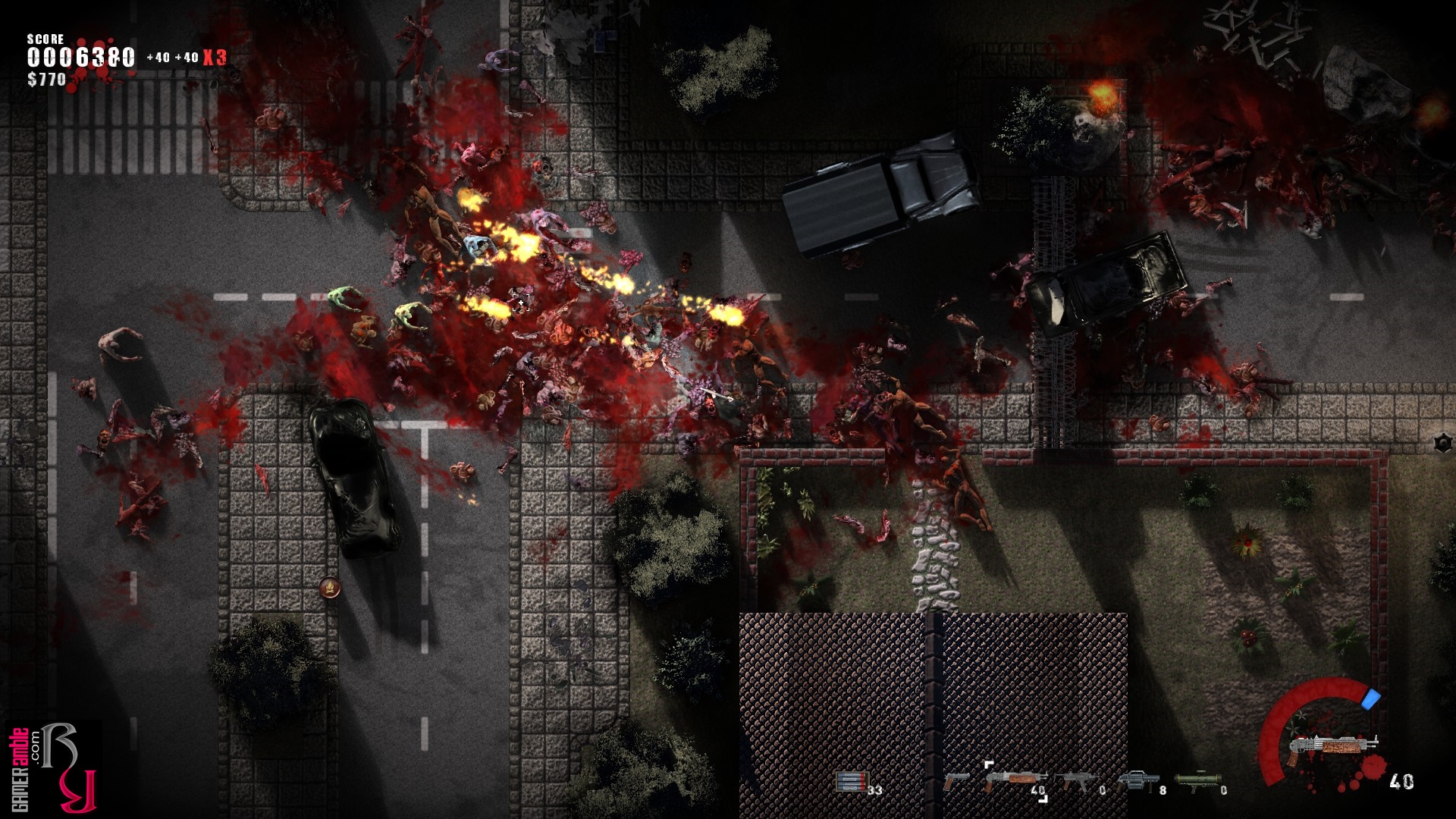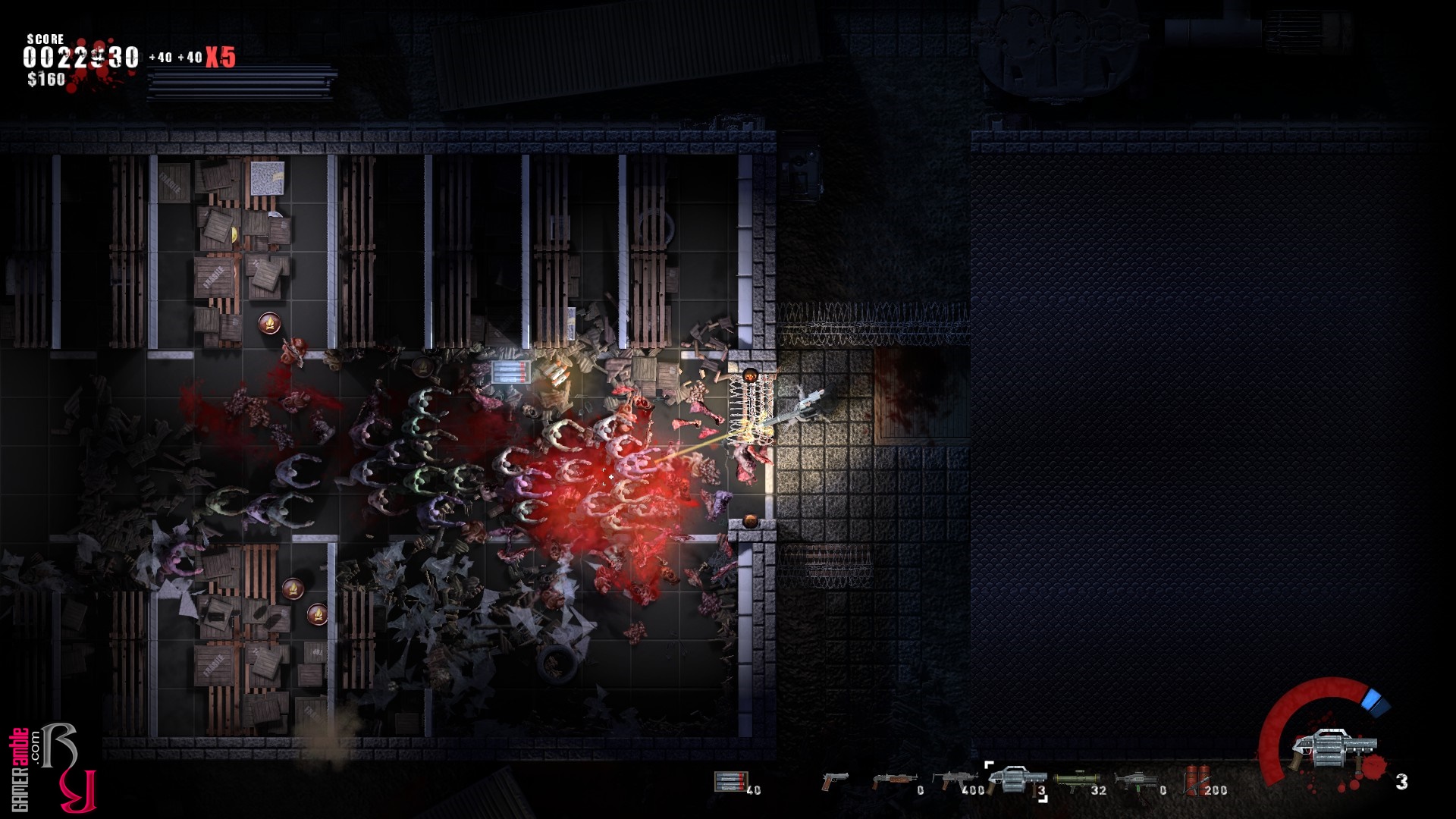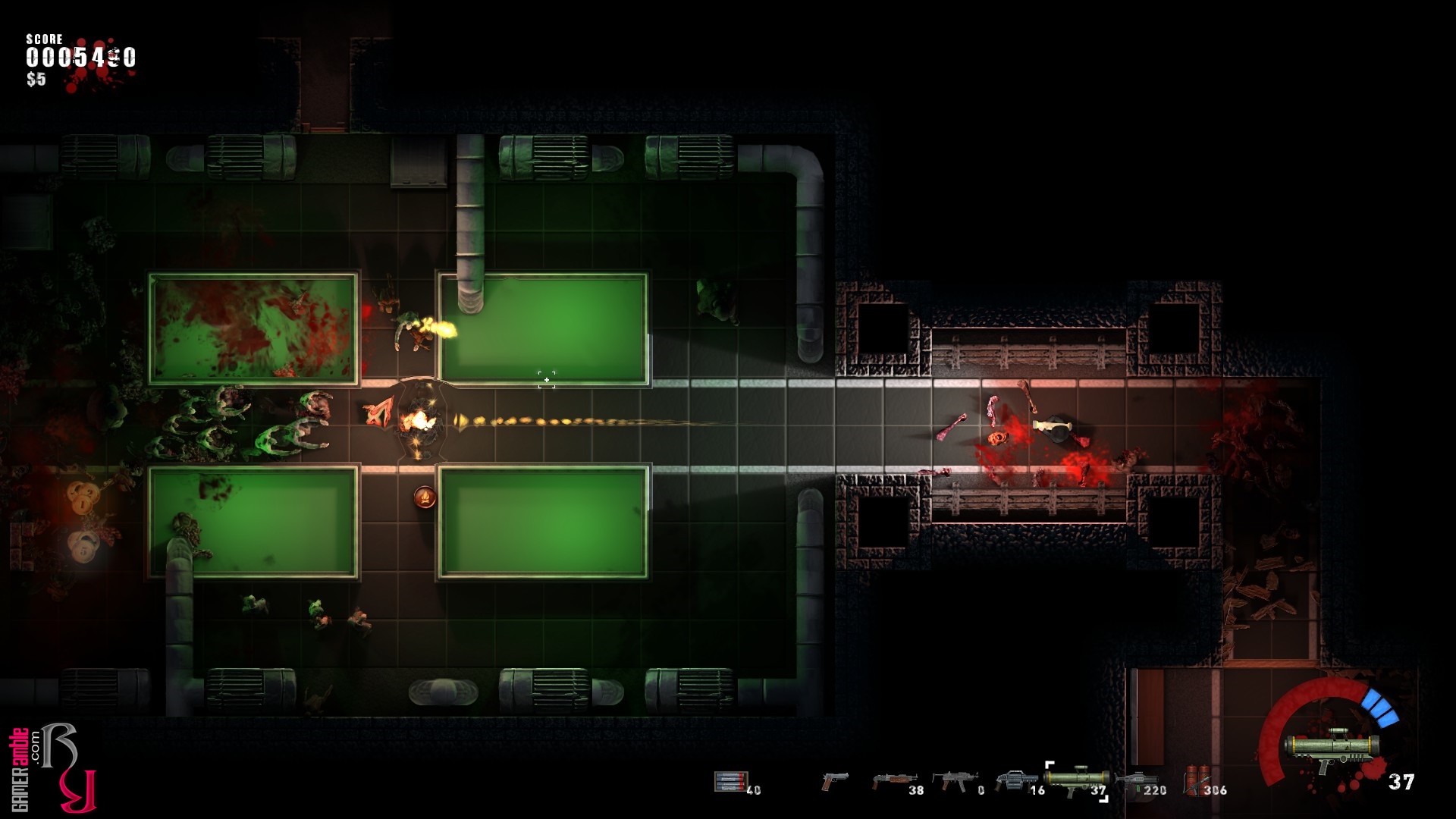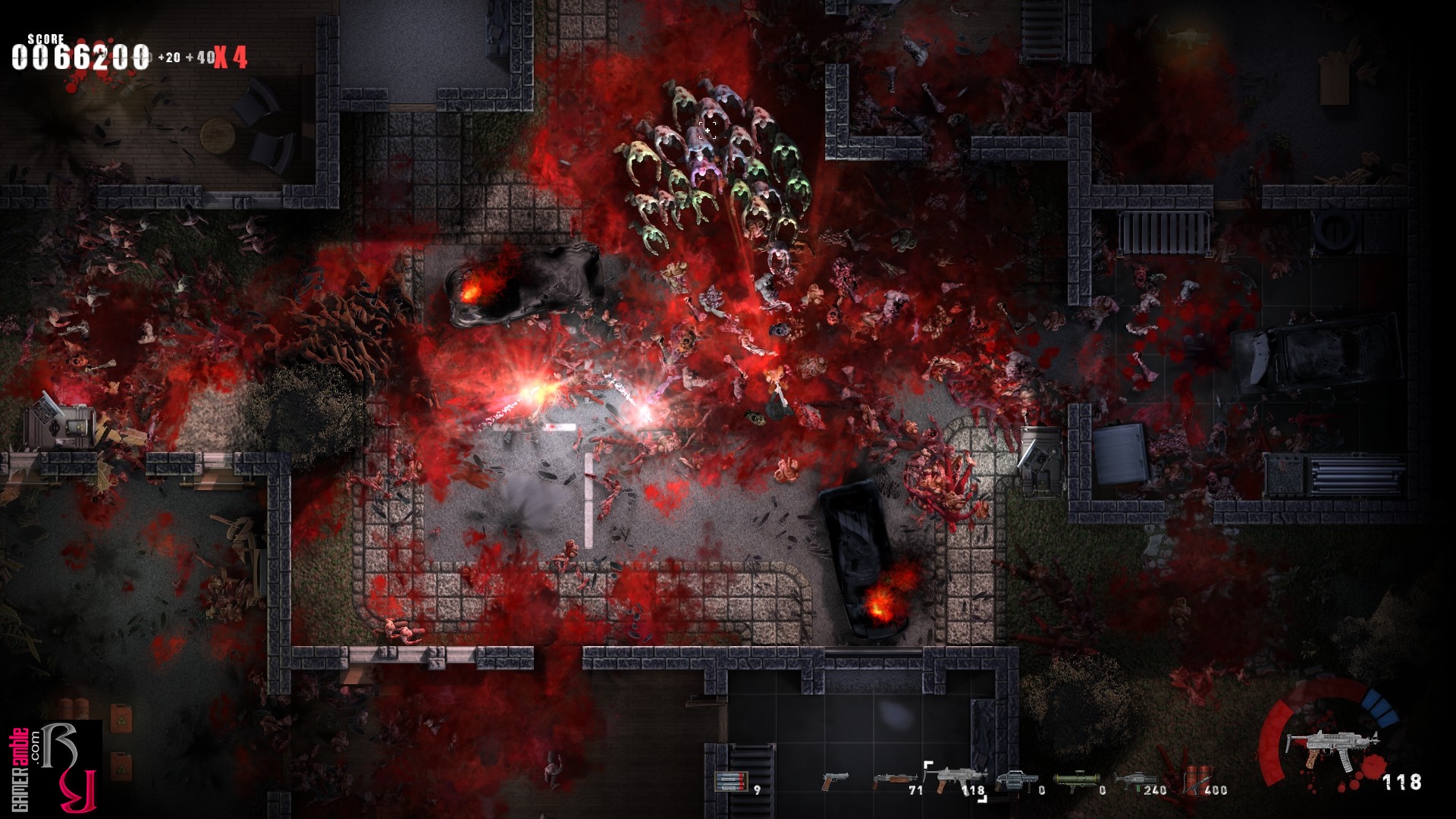Splatter – Zombiecalypse Now
Developer: Dreamworlds | Publisher: 1999UEM | Release Date: 2014 | Genre: Action / Top Down Shooter / Indie | Website: Official Website | Purchase: Steam
Splatter – Zombiecalypse Now opens with the badly wounded protagonist, Max, musing about the hellish week that he has had. It all began on a (bloody) Sunday when his doorbell rang, and Max was accosted by a snarling zombie. The military kills the zombie but instructs Max to evacuate the city as everything has gone to hell. However, as soon as Max picks up a handgun from a corpse in the streets, he decides to run toward the threat instead of away from it. It’s probably not the wisest thing to do, but as Max is dressed in a leather trench coat and wears a fedora, he’s probably not the type who listens to common sense.
Along with the name, Max also shares a penchant for film noir and wisecracks with Max Payne of Remedy fame. However, this Max stars in an indie-developed top-down shooter where he aims to take down zombies and other monsters instead of the mob. The film noir action is wrapped up in a 16-level single-player campaign where Max can rampage through the city, a subway, a farm, a factory, a laboratory, and other monster-infested locations. One of the most surprising things about the apocalypse in Splatter is that what remains of humanity is surprisingly cooperative. They are not all friendly, but we were honestly suspicious of just how talkative and helpful the people Max encountered were. Perhaps only evil people turned into zombies as we didn’t run into any thugs, bandits, or other criminals. In fact, thanks to a choice players can make early in the game, Max is the only person who guns down an innocent man purely out of paranoia.
Splatter has one more thing in common with the Max Payne titles: destructible environments. Sure, it doesn’t look quite as impressive when viewed from a top-down perspective, and you can’t destroy walls, but the carnage you can leave in your wake is still admirable. The monsters are just as volatile as the environments, and all their gory bits remain on the ground after each encounter. This means that Max will be surrounded by blood, gore, and debris after an intense battle. Adding to the film noir vibe are some nice rain effects for the outside areas, and the game knows how to do good explosions too. Splatter also does a great job with lights and shadows, although the quality of these can be adjusted for those with slower computers. The only downside to all of the destruction is that it can sometimes be challenging to see a lone monster sneaking up on Max. Since the game uses line of sight, Max will only know what is inside a dark room once he enters it, which adds to the suspense, especially on higher difficulties.
Along with the typical shambling zombies, Max will also encounter faster zombies, jumping creatures that love lurking in dark corners, fire-spitting bugs, worms, spiders, and other monsters. Joining these are also bigger bosses that typically require some strategy to beat. Splatter nails the B-movie feel of a film noir zombie horror, but we are unsure whether the stiff voice acting was intentional. Nevertheless, the music is very fitting, and the sound effects are good. The game works best with typical mouse and WASD controls, but a controller can also be used. In fact, Splatter allows for up to four players to play together on one computer using whatever control methods you can cobble together. It’s also nice that the game allows players to set the walking to either cardinal or view direction.
Initially, Max only has a pistol at his disposal, but he soon gains access to better weaponry, such as a shotgun, machine gun, grenade launcher, flamethrower, and even a laser rifle. All of these have limited ammunition, so the pistol with its unlimited ammo will remain a trusty fallback. Max can collect money while exploring the levels and then use it at special benches to create upgrades for his weapons. Each gun can be upgraded three times, with the cost increasing each time. In an interesting twist, players do not have to worry about reloading, which feels a bit strange at first but helps to even out the odds as Max can’t run.
Along with the weapons, the game also has a dedicated button for throwing flares, which causes enemies to retreat from it in terror. It doesn’t work on all of them but can provide Max with vital breathing room when cornered. Finally, there are even a few vehicle sections where Max can become the gunner on the back of a car driven by someone else or hop into a combine harvester and mow down some zombies.
Overall, it didn’t take us very long to complete the campaign, but we had a lot of fun along the way. The four different difficulty settings, along with the leaderboards and achievements, also mean that there’s some replay value. Splatter also has a survival mode with different maps, including one based on Crimsonland, a title from which this game draws a lot of inspiration. It doesn’t do anything terribly new or exciting with the genre, but what is on offer is pretty solid and very entertaining.
System Requirements
- Minimum PC System Requirements
- Recommended PC System Requirements
- Minimum Mac OS X System Requirements
- Recommended Mac OS X System Requirements
- Minimum SteamOS + Linux System Requirements
- Recommended SteamOS + Linux System Requirements
- OS: Windows Vista
- Processor: 2x 2GHz with SSE2
- Memory: 2 GB RAM
- Graphics: SM3.0 GPU with 768MB memory, mobile/integrated GPUs might not work!
- DirectX: Version 9.0c
- Storage: 500 MB available space
- OS: Windows 7, 8, 10
- Processor: 2x 3GHz
- Memory: 2 GB RAM
- Graphics: NVidia Geforce GTX 470 or AMD Radeon HD 4850
- DirectX: Version 9.0c
- Storage: 500 MB available space
- OS: OSX 10.7
- Processor: DualCore with SSE2
- Memory: 2 GB RAM
- Graphics: SM3.0 GPU with at least 768MB memory, mobile/integrated GPUs might not work!
- Storage: 500 MB available space
- OS: OSX 10.7
- Processor: 2x 3GHz
- Memory: 2 GB RAM
- Graphics: NVidia Geforce GTX 470 or AMD Radeon HD 4850
- Storage: 500 MB available space
- OS: ErmYeah2.0 or better
- Processor: 2x 2GHz with SSE2
- Memory: 2 GB RAM
- Graphics: SM3.0 GPU with 768MB memory, mobile/integrated GPUs might not work!
- Storage: 500 MB available space
- OS: NewAndShiny
- Processor: 2x 3GHz
- Memory: 2 GB RAM
- Graphics: NVidia Geforce GTX 470 or AMD Radeon HD 4850
- Storage: 500 MB available space

